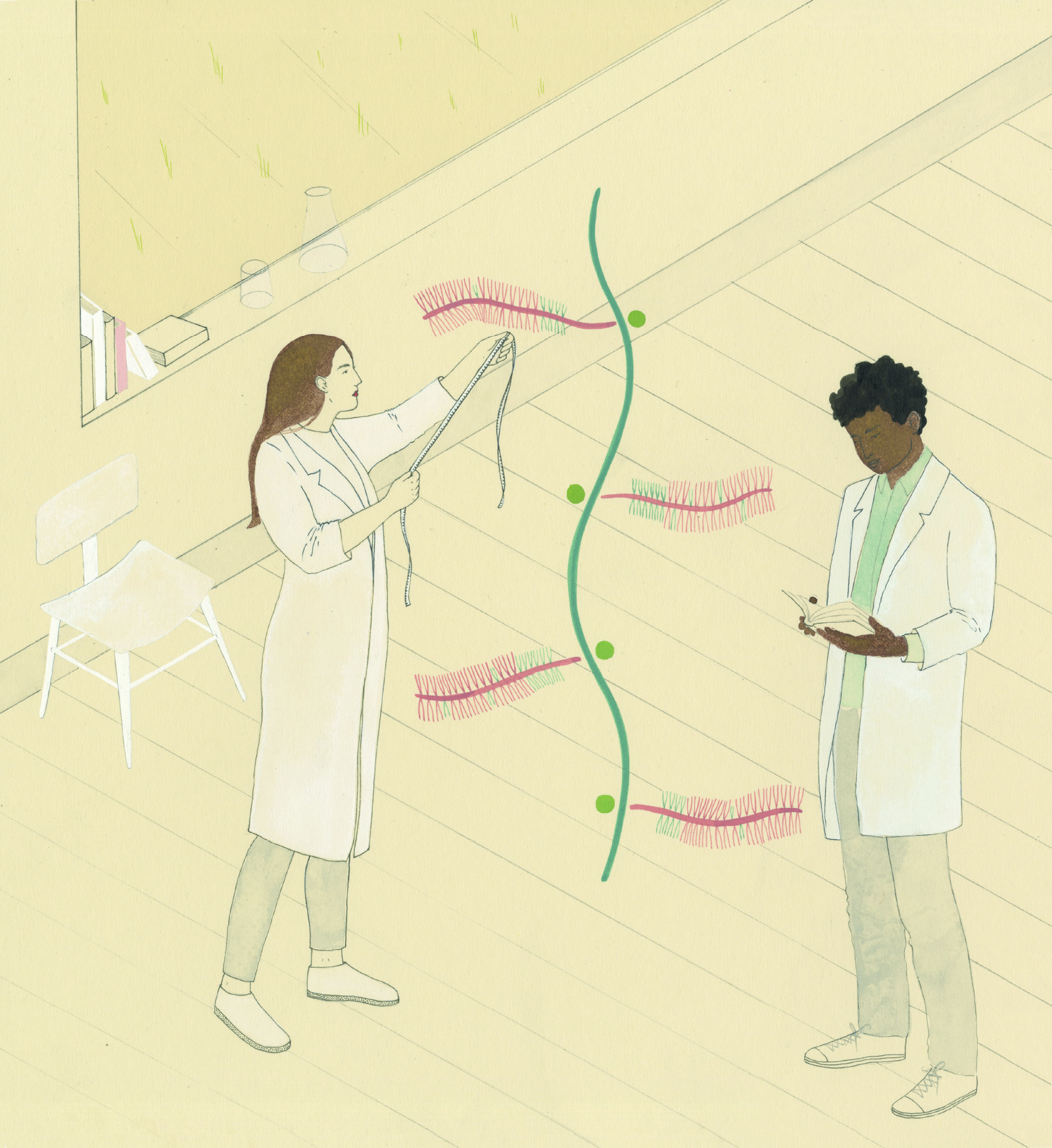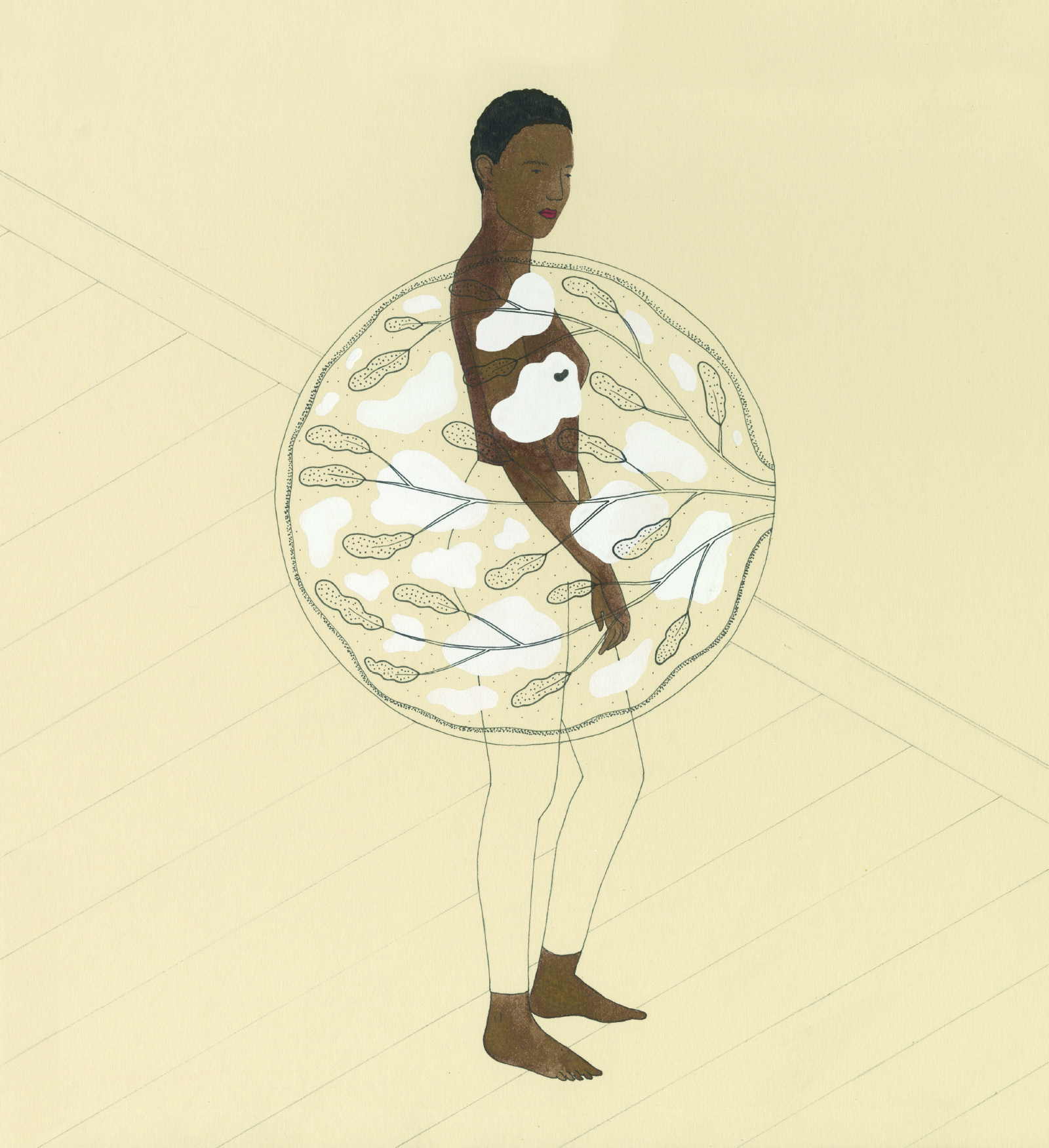
_Margaret E. O’Neil
O’Neil is an associate professor of physical therapy and rehabilitation sciences in the College of Nursing and Health Professions.

_Paul Diefenbach
Westphal College of Media Arts & Design

_Sandhya Kortagere
Kortagere is an assistant professor of microbiology and immunology in the College of Medicine.

_Michele Marcolongo
Marcolongo is head of the Materials Science and Engineering Department in the College of Engineering.

_Wan Shih
Wan is an associate professor in the School of Biomedical Engineering, Science and Health Systems.

_Wei-Heng Shih
Wei-Heng is a professor in the Materials Science and Engineering Department.
The recipe to bring a new product to market requires three ingredients: one part novel technology, one part robust management team and one part capital.
Most academics have expertise only in the first — which presents an obstacle to commercializing new discoveries. At Drexel, however, researchers have a resource most universities don’t: the Coulter-Drexel Translational Research Partnership Program.
Established nine years ago, the program helps researchers commercialize inventions that improve human health by equipping them to compete for and win proof-of-concept funds.
The format for project selection is similar to the reality TV show “Shark Tank.” First, researchers submit applications to an oversight committee at their university. Those who advance make an oral presentation and are given training to prepare to answer dozens of pointed questions from entrepreneurs, investors and others about market size, regulatory requirements, reimbursement strategies and competition. Winners receive grants and guidance to help develop their ideas.
“I think of the Coulter Program as the angel investor,” says Davood Tashayyod, business development director of the program. “Researchers have to do a pitch, and they have to convince a group of investors that they’re not investing in a bridge to nowhere.”
At Drexel, more than 40 projects — devices, diagnostics and drugs — have received money totaling about $5.54 million through the Coulter Program. Of those, a dozen have been licensed; meaning management teams are raising venture capital for additional pivotal FDA studies or a major corporation is capitalizing the project.
So far, one project has made it to market — FDA approval is a long process — and several other technologies promise to join it soon. The half dozen projects profiled here offer compelling ideas.

Mixing Fun and Physical Therapy
“We don’t believe in basic research, research in search of knowledge. Translational research is research in search of a product. …We do not want to create entrepreneurs. We want serial innovators — those professors who stay at the University and do what they do best…teach, research and innovate.”
— Mara Neal, director of research awards, Coulter Foundation
Children with cerebral palsy (CP) often have a home regimen of physical therapy — and they usually have one word to describe the activities and exercises: Borrring!
But like many youngsters, these children were attracted to video games, including the XBox 360 Kinect, where they use their body to control the games.
In theory, the full-body movement games could encourage children with the neuromotor disability to improve their physical function; but most patients found the games too challenging (too fast, distracting or noisy) to play successfully. What was needed was a game designed at their level that would challenge them to use their motor skills — while still being fun to play.
That led Drexel researcher Margaret E. O’Neil to an “aha! moment.”
“Wouldn’t it be great if we could change the parameters of this game?” wondered O’Neil, an associate professor of physical therapy and rehabilitation sciences in the College of Nursing and Health Professions.
The idea for Kollect was born.
O’Neil calls it an example of “stealth health.” The video game prototype, in which objects are collected, allows a therapist or parent to adjust parameters, such as the length of the game or which side of the screen the objects appear, in order to match gameplay to therapeutic goals, she says. The platform also records data and transmits feedback on patient progress to the therapist. In addition, it will have social networking aspects.
A $130,000 award from the Coulter Program allows for further game development as well as a rigorous patient study to test the platform.
“I don’t see anybody else filling this niche,” says co-principal investigator Paul J. Diefenbach, an associate professor in digital media who directs Drexel’s RePlay Lab for game research.
Already, a father in Germany who saw a video about the project asked how to purchase it for his toddler.
“It has the potential to impact so many people and change lives,” says Diefenbach.

Parkinson’s Drug Without The Side Effects
The gold standard for treating Parkinson’s disease is far from perfect. Within five years of using the popular drug Sinemet or other L-dopa drugs, as many as 80 percent of patients develop dyskinesia, a severe, painful movement disorder. As a result, many Parkinson’s patients delay treatment and suffer through early-stage motor symptoms.
Now, Drexel molecular pharmacologist Sandhya Kortagere has designed a new drug that offers a promising alternative without the dyskinesia. “I think developing this compound has been the best challenge and most rewarding experience for me,” says the assistant professor of microbiology and immunology in the College of Medicine.
With a $100,000 grant from the Drexel Ventures Innovation Fund, Kortagere conducted tests of her drug on rodent models. Strong findings made her a prime candidate for the Coulter Program.
Called PCT-3010, it modulates both dopamine — too little causes Parkinson’s — and norepinephrine in the brain to reduce motor and other symptoms. It would give physicians an option to treat early as well as advanced symptoms of a disease that affects 6 million older people worldwide.
Kortagere’s experiments also showed that a daily dose of PCT-3010 can also improve some aspects of cognitive impairment that can characterize Parkinson’s disease. L-dopa, another current therapy, is known to worsen cognition.
“My compound when fully developed will help fill the existing treatment gaps,” says Kortagere.
PCT-3010 essentially has more selective signaling properties than current therapies. It activates the dopamine D3 receptors without desensitizing them and also inhibits norepinephrine transporters in the brain.
With a $100,000 award from the Coulter Program and other matching funds, Kortagere will run an experiment designed to validate the drug on higher species, such as dogs and macaque monkeys. As valuable, she says, is the guidance the Coulter Program provides on business aspects, including access to an adviser with experience in the pharma industry.
“Ultimately,” Kortagere says, “I felt like the Coulter Program wanted me to succeed. That was the message I got from the whole experience.”

Reversing the Biological Clock
Proteoglycans are key proteins essential for the proper hydration and functioning of the human body’s connective tissues. As we age, however, proteoglycans degrade and tissues dry out and lose elasticity, explains Michele Marcolongo, head of the Materials Science and Engineering Department at Drexel. What results is a host of age-related problems: back aches, incontinence, wrinkles.
But what if a synthetic material that mimics nature and only costs pennies to make were available?
Marcolongo’s lab has done just that by synthesizing a family of biomimetic proteoglycans (BP) that look and behave like the natural molecules — in fact arguably better.
BPs not only replenish the molecules in the targeted tissue but restore it to health. She says they also show resistance to enzymatic breakdown and therefore “stick around a lot longer.”
“I call it the fountain of youth,” Marcolongo says.
Since 2010, she has won Coulter Program grants totaling $450,000 for this work. Her startup, MiMecore, is raising seed money.
Considered a platform technology, the BP molecules Marcolongo initially designed for discs can be adapted to different uses, say in wrinkled foreheads. “We can go on and on,” she says. “It can go in any soft tissue.”
The natural molecule is shaped like a dense bottlebrush — a core with bristles that radiate in a 3-D structure. The bristles, which have a high negative charge, attract water molecules.
While others have developed synthetic versions of proteoglycans, Marcolongo says only her lab has succeeded in so closely copying nature. Once introduced to the degenerated tissue, the bottlebrush architecture allows it to integrate with the existing collagen.
Easily deliverable, an injection of the synthetic material would run about $10 compared to the exorbitant $20,000 for the real deal, Marcolongo estimates.
One exciting application is for urinary incontinence.
Affecting 56 percent of postmenopausal women, the condition results from urethral tissue that thins out and becomes less hydrated, thereby causing leakage.
Synthetic bulking agents, a current protocol, work well but only last a few months because the particles migrate out of the urethra. Studies in porcine models show that when a type of BP, synthetic biomimetic aggrecan, is injected, it binds to the collagen in the tissue and does not shift.
“This should offer a major advantage over prior treatments,” says Marcolongo.
A Portfolio of Detection Tools
Wan Y. Shih seems to have a knack for translating her research into real-world applications.
So far, the associate professor in the School of Biomedical Engineering, Science and Health Systems has three projects with support from the Coulter Program. One of them — an intelligent breast cancer detector called the NoTouch BreastScan — has been licensed, an important step toward commercialization. Her second project, also related to breast cancer, uses nanocrystals to assess clear tumor margins in a timely fashion. Lastly, she has developed a rapid, accurate and low-cost test for diseases, including Clostridium difficile (C. diff) bacteria.
She and her husband Wei-Heng, a professor in the Materials Science and Engineering Department, have been working together on all these projects.
“As we continue to invest heavily in our technology commercialization efforts, the Coulter experience informs everything we do. Coulter recognition also gave us the privilege and responsibility to be ambassadors for translational research around the world and put us in a research network with wonderful institutions such as Duke, Michigan, Stanford and Virginia.”
— John A. Fry, president, Drexel University
The intelligent sensor, known as a piezoelectric finger (PEF), detects tumors by measuring small differences in tissue elasticity, that is, stiffness and softness. Tumors, of course, are harder than surrounding tissue.
“Human fingers have limitations,” says Shih, whose own battle with breast cancer further inspired the detector. “There is no hand-held tool that can measure stiffness of any kind. If you want to find something at an earlier stage, you need some tool.
“This is a breakthrough,” she adds.
Currently, mammography is only 85 percent successful in spotting tumors — a figure that drops to 65 percent for women with dense breasts, Shih says. That group includes many younger women and Asian women of all ages. The result is often later diagnosis and increased risk of death.
In addition, many Asian countries cannot afford routine mammography screening.
PEF is a solution to both problems, according to Shih. It is highly sensitive, allowing for tumor detection in dense breast tissue. It also is noninvasive, radiation free, portable and low cost (about a few hundred dollars, she estimates) — making it ideal for use in poorer nations.
The sensors measure forces and displacements at the surface of tissue. That ratio is converted into electrical signals that can identify very small tumors and may even offer clues on whether a lump is malignant or not. In one test on an excision, the device not only found the main tumor but another, very small (3 mm) one that the surgeon had missed, Shih says.
The device has been successfully tested on tumor samples (100 percent accuracy) and undergone preliminary trials on women. “It detected pre-cancer and cancer missed by mammography,” she says.
This project has received about $200,000 from Coulter and $100,000 from the University Science Center translational grant program. In 2011, the technology was licensed by UE Lifesciences, a company in Philadelphia.
MarginSurgical, Shih and Shih’s second company, is developing a timely, accurate way to assess whether the entire tumor was removed during surgery.
Currently, tumors are sent to pathology, which can take a day or two to report its findings. If the margins contain cancer cells, then the patient must undergo another surgery.
Shih says re-excision rates for breast cancer vary from 15 percent to as high as 60 percent.
Her test allows for an assessment in the operating room — and the chance to do the re-excision, if necessary, right then and there, which can reduce overall treatment costs and improve the patient’s experience.
The test uses a type of nanocrystals known as quantum dots (QDs), which the Shihs have developed with high luminescence visible in near-infrared light. But the true innovation is that these QDs are made in an aqueous process that allows them to link to antibodies that can then attach to the receptors on the surface of cancer cells.
“We came up with a construct that can be very cost effective in linking to receptors,” she says.
The researchers envision that surgeons would remove a tumor with at least a 2-mm margin and then spray it with the antibody-functionalized quantum dots. Using a camera or goggles that detects near infrared, the surgeon would examine the tumor for luminescence — a sign of cancer cells on the surface.
“You don’t want anything to light up,” she explains. “You want a pitch dark screen.”
The Coulter Program awarded $240,000 toward this project.
Shih and Shih’s third business idea is a low-cost, more accurate testing tool for C. diff, a common intestinal bacteria infection that can grow out of control in the gut of patients using antibiotics. Highly contagious, it is a growing concern in hospitals, where incidence has skyrocketed.
“Mortality is very high,” says Shih, noting that C. diff causes 14,000 deaths a year in the United States. The annual treatment cost is more than $3 billion.
Currently, a stool test is used to detect C. diff, but its effectiveness is only 60 percent. “That’s really like throwing dice,” she says. More sophisticated testing is very expensive and only available at a few hospitals.
Shih’s alternative is more accurate and specifies the presence of two specific toxins, allowing physicians to target treatment. Like her breast cancer scanner, this device relies on the piezoelectric technology.
Called a piezoelectric plate sensor (PEPS), it consists solely of a very thin, novel, man-made crystalline material that allows for greatly increased sensitivity. The device would have three PEPSs, two of them primed to detect the toxins produced by C. diff infection and one for a control.
Costing less than $10 per test, the tool could be adapted to check for other infections, including malaria or hepatitis.
“I think it can be employed where it is needed most,” she says. She and her husband have founded a small business, Lenima Field Diagnostics, to build a prototype. The Coulter Program has given the project $130,000.
“The Coulter Program was an eye opener,” Shih says. “It nudged us toward commercialization.”

